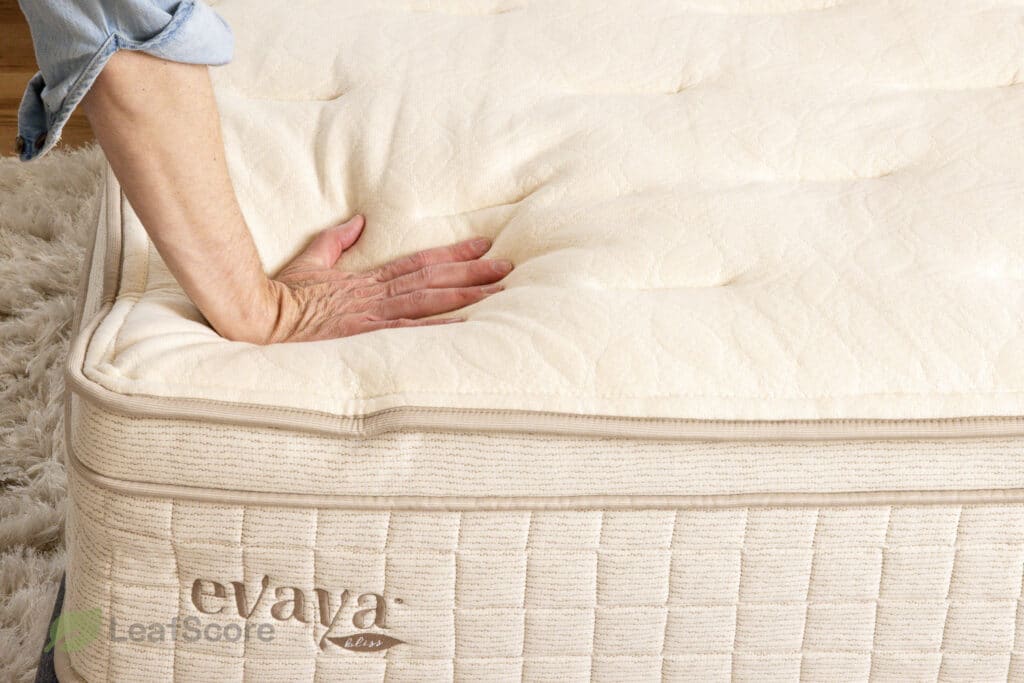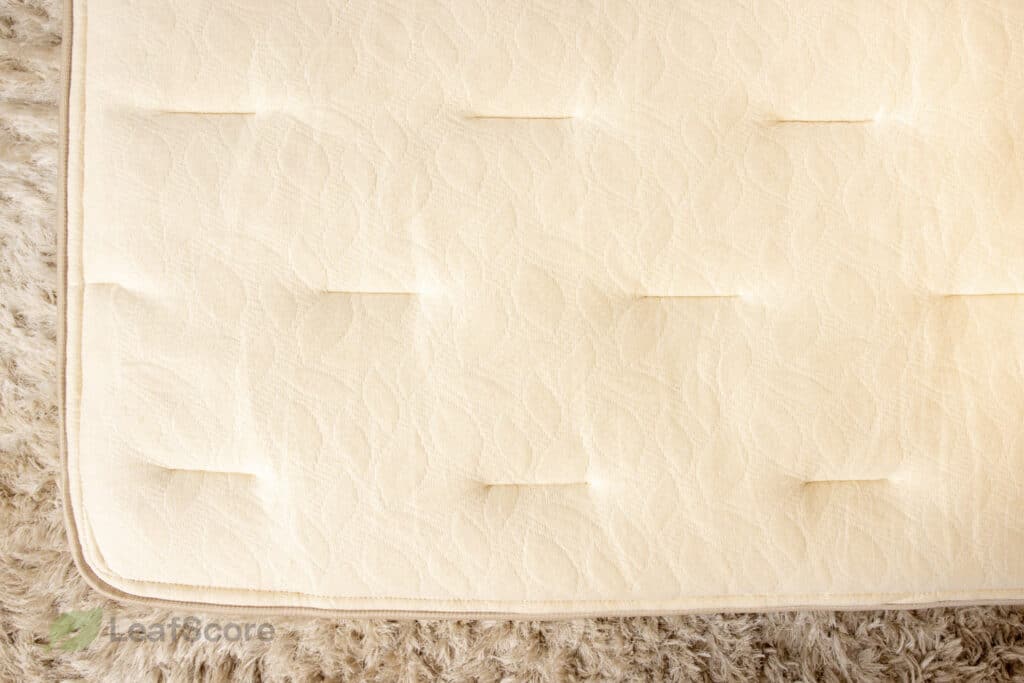Latex mattresses and hybrid latex mattresses are increasingly popular as more people switch away from polyfoam and memory foam. What are the pros and cons of latex for mattresses, though? Is this natural material really a viable alternative to the synthetic foam used since the 1960s?
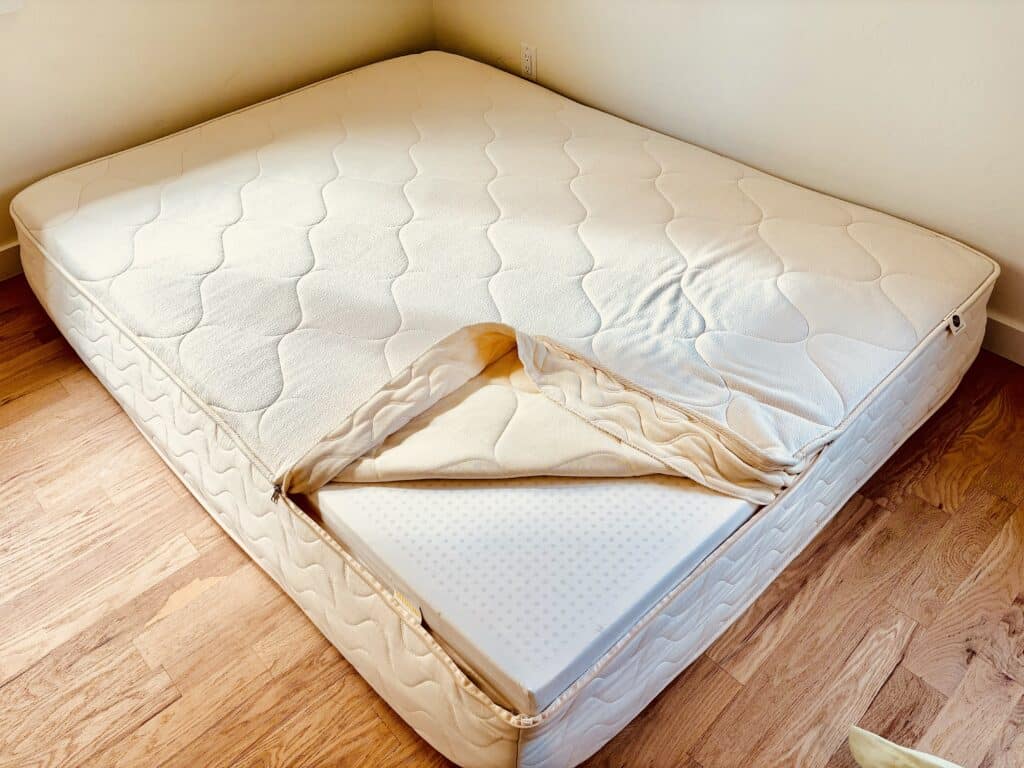
Table of Contents
| Pros of latex matttresses | Cons of latex mattresses |
|---|---|
| Comfortable | Raw materials don’t grow in North America |
| Durable | More expensive to produce than polyfoam |
| Biodegradable | Heavy and tough to move |
| Sustainable | Can have an initial rubbery smell |
| Naturally antimicrobial | Lacks edge support |
| Resists mildew | |
| Doesn’t harbor dust mites | |
| Easy to wipe down | |
| Breathable | |
| Disperses heat (for better temperature regulation) | |
| Is more responsive than memory foam |
What is natural latex?
Latex, also known as natural rubber, is a product of the Hevea brasiliensis or rubber tree and is renewable and sustainable. To make latex, you peel the bark of a rubber tree and harvest the sap. This can be done repeatedly and doesn’t kill or harm the trees. In fact, rubber trees can provide sap for up to 30 years, during which time they also sequester carbon.
After the sap is harvested, various processes are used to create different kinds of latex. For mattresses, most of the latex is produced using either Dunlop or Talalay processes.
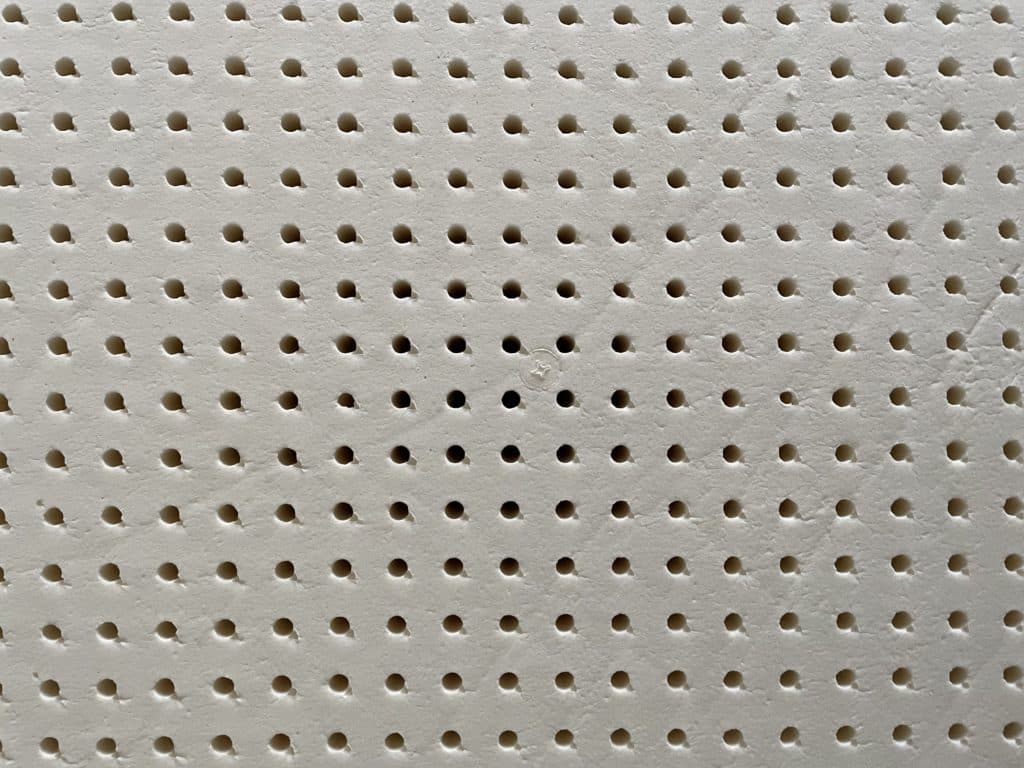
Types of latex
Two types of latex are common in latex mattresses: Dunlop and Talalay. Dunlop latex is typically slightly firmer than both Talalay latex and most polyurethane foam. We discuss the differences between these types in much more depth here.
The mattress we carry in the LeafScore store, Evaya Bliss, is manufactured with FSC certified talalay latex.
One mattress company, PlushBeds, also uses Arpico latex. This is technically just organic Dunlop latex, though, albeit an ultra-dense type of latex from a specific plantation. Arpico latex offers robust support, making it a great choice for larger, heavier adults and those who like a firmer mattress feel. Talalay latex is often a good choice for lighter adults who need plusher support.
Benefits of latex
- Comfortable
- Regulates temperature
- Antimicrobial
- Sustainable and durable
- Expensive
- Very heavy
- Hard to move
- Latex smell
Natural latex has many inherent qualities that make it ideal for use in mattresses. It also has several environmental advantages over polyfoam.
It’s comfortable to sleep on
When cured, latex is responsive and bouncy, but not too bouncy. The amount of springiness depends on the kind of latex and the firmness rating. In general, though, latex cradles the body, offering gentle contouring and pressure relief. You don’t sink into latex like you do with polyfoam, meaning latex supports the body’s natural alignment. This promotes better sleep, easier movement across the bed, and less stiffness upon waking.
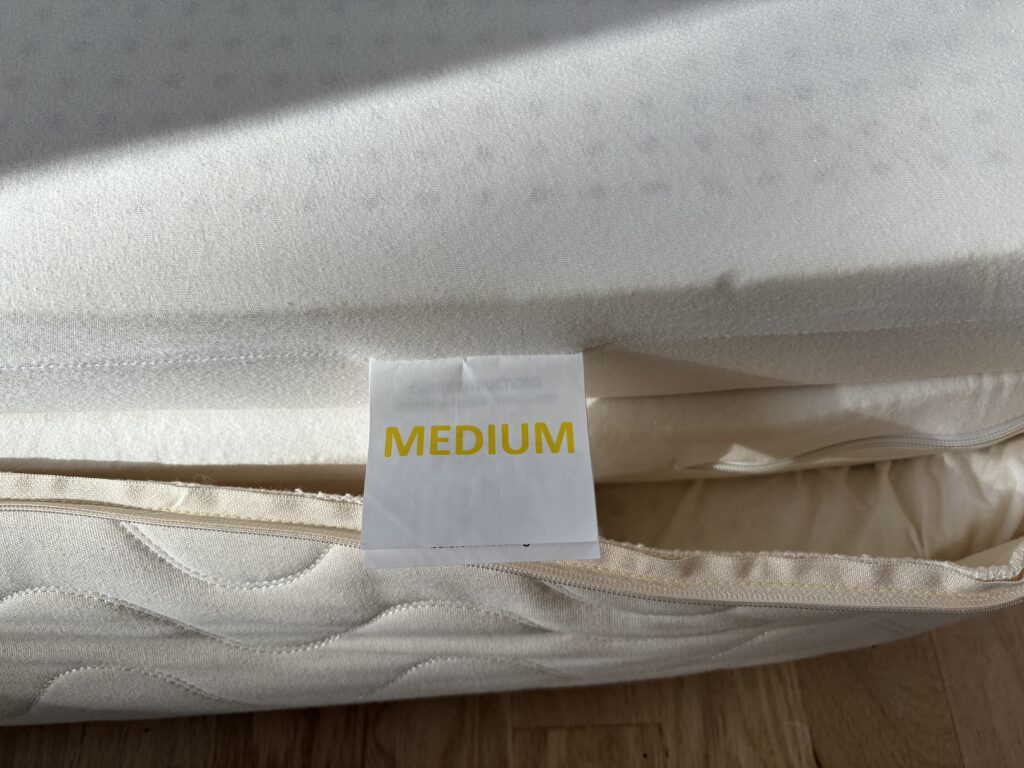
It helps regulate temperature and is breathable
Latex is naturally porous, particularly Talalay latex. This means it allows airflow, is breathable, and helps to disperse heat. You don’t get the sweaty, trapped feeling of polyfoam when sleeping on a latex mattress. Instead, the mattress will help your body to regulate its temperature.
Latex is a great choice for hot and cold sleepers. It will help you stay cool but cozy all night, regardless of the season.
Latex is antimicrobial and resists mites and mildew
If you have dust mite allergies or concerns about mold and mildew in your home, latex is a great choice for mattress materials. This natural material resists mildew and doesn’t harbor dust mites. It’s also easy to wipe clean and let air dry, depending on how the latex is manufactured. We’d still recommend a mattress cover for easy cleaning and longevity, though.
It’s sustainable and durable
Latex is produced from rubber trees that help to sequester carbon from the atmosphere. A plantation containing around 2,500 rubber trees can sequester an estimated 143 metric tons of carbon dioxide from the atmosphere every year. This helps tackle climate change, especially if the rubber tree wood is turned into other products, such as toys, at the end of their life.
Younger trees sequester carbon more efficiently and produce more sap, so a regular turnover of trees can be beneficial for the environment and for latex production.
Latex is durable too, which is why you often see 25-year or even lifetime warranties on latex mattresses. You don’t get this with a memory foam or polyfoam mattress, given that synthetic foam tends to break down rapidly over just a few years.
At end of life, latex will biodegrade naturally. This doesn’t happen quite as quickly as with wool or cotton, but latex will usually biodegrade within six months to four years, depending on conditions. For 100% natural latex, the material biodegrades without releasing toxic chemicals into the environment, unlike polyurethane foam.
Note, though, that some manufacturers do use undesirable chemicals to make latex and these can prevent it biodegrading naturally and can leach into soil and water. This is why it’s best to choose latex made by reputable, responsible companies with a commitment to environmental preservation.
Check out the Evaya Bliss, a Made Safe and Eco-Institut Mattress we started carrying in our online store, LeafScore Essentials. Evaya features Wool Integrity wool, FSC certified talalay latex, and Cashmere for added comfort. Evaya’s certifications guarantee the product is free of even trace amounts of harmful chemicals. Use code ESSENTIALEVAYA for 15% off your order.
The downsides of natural latex
Latex has few downsides when used for mattresses. These include cost, weight, and a slight rubbery smell at first.
Latex mattresses cost more
The main concern with latex is simply the greater cost compared to cheap polyfoam made in a lab.
It takes time to grow and cultivate rubber trees, harvest the sap, and turn the sap into latex.
Each tree in a rubber tree plantation yields around 15 grams of latex a day. A Queen size all-latex mattress requires the daily output of around 2,500 rubber trees, across a 10 acre plantation.
Turning sap into latex requires specific knowledge and dedicated machinery, which can be expensive. Talalay costs more than Dunlop latex because its production requires additional skills and equipment.
That said, to make polyfoam that doesn’t trap so much heat, is almost as comfortable as latex, and is antimicrobial also requires more time, chemicals, and money. As such, pricier polyfoams are on a par with some of the most cost effective latex.
All in all, if budget is a major factor when choosing your next mattress, a latex hybrid mattress is a great choice. Many latex hybrid mattresses now cost the same or less than a synthetic foam mattress and will need replacing far less frequently. They’re also healthier and more eco-friendly.
Latex is heavy
There’s no getting away from the fact that latex is a heavy material. Dunlop and Arpico latex are particularly dense and heavy, whereas Talalay is a little lighter and airier.
Still, expect some King size latex mattresses to weigh in the region of 180-200 lb. Even a Twin size can top 100 lb. If you’re looking at home assembly all-latex mattresses, know that each layer can be heavy and unwieldy. You may need help with set-up, especially if you’re disabled, have a short arm-span, aren’t that strong, and where layers aren’t split and span the whole bed.
Some mattress companies offer a white glove delivery service with set-up, for a fee. If you think you’ll struggle moving boxes upstairs and layers into place, the extra couple of hundred dollars may be well worth paying.
Because latex is a heavy material, it also has higher transport associated emissions than lighter polyfoam or coil mattresses. This is one reason we like Avocado, a mattress company that is carbon negative and ships everything carbon-neutral in the U.S.
Latex can have a rubbery smell
Latex mattresses can have a rubbery smell at first, but this dissipates quickly and is not harmful to health. If you think it might bother you, plan to air out your mattress for a few hours or days before sleeping on it.
Note that any rubbery smell from a genuinely natural latex mattress is not a sign that the mattress is off-gassing toxic chemicals.
When looking at mattresses, it’s important to check that the latex is 100 percent natural latex and not a ‘natural’ latex blend. If you see SBR or unspecified ‘foam’ in a product description this isn’t a natural latex mattress.
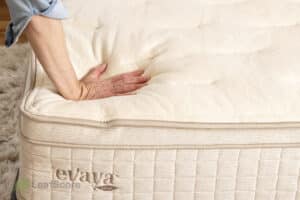
Evaya Organic Mattress [Staff Tested]
Eco-Institut and Made Safe Certified, will never off-gas, and certified to be free of even trace amounts of hazardous chemicals. Manufactured using EverEden Premium wool sourced from New Zealand farmers.
“Pure” latex mattresses lack edge support
Another drawback of a pure latex mattress is that the mattresses lack edge support. This is why we often recommend readers choose an innerspring hybrid mattress (think bed in a box) because they offer the comfort of latex, but with greater structure and support.
Final thoughts on the pros and cons of latex in mattresses
Latex is a fantastic material for mattresses. While it costs a little more than cheap polyfoam, it’s about the same price as more expensive memory foams. When it comes to the cost to the planet and your family’s health and sleep, though, there’s no comparisons: latex wins out every time.
If you’re considering a latex mattress but have concerns about latex allergies, we talk about that here.
